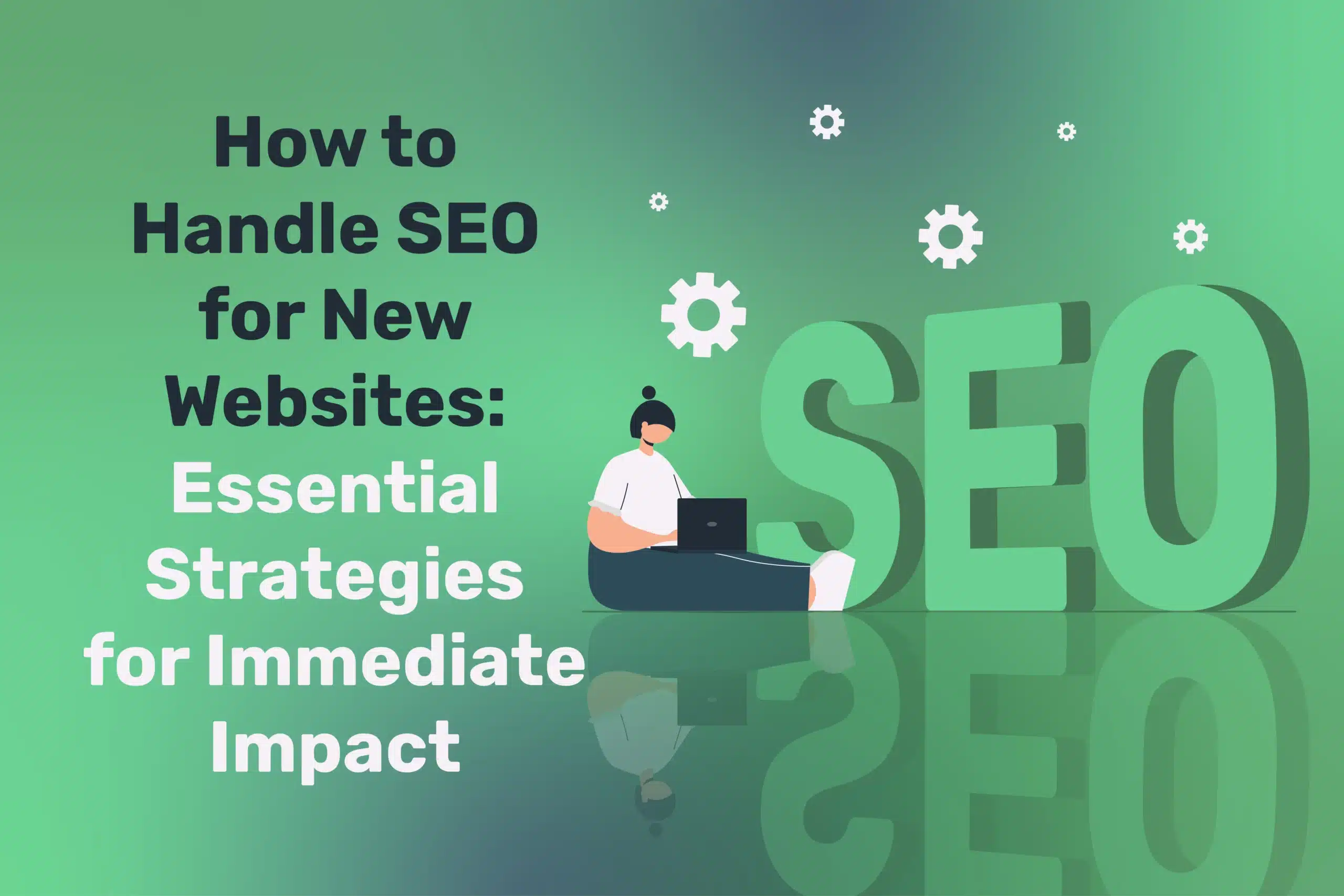
Faceless Digital Marketing: The Future of Brand Building
Table of Contents
Faceless digital marketing represents a significant shift in how businesses establish authority, connect with audiences, and drive measurable results—all without relying on a visible spokesperson or personal brand. This approach focuses on delivering exceptional value through strategic content, consistent branding, and intelligent automation rather than leveraging an individual’s personality or image.
According to recent industry data, 73% of successful e-commerce brands now operate without a prominent personal figurehead, demonstrating the growing trend towards brand-focused rather than personality-driven marketing strategies. This shift reflects both changing consumer preferences and practical business considerations in an increasingly competitive digital landscape.
For business owners and marketing decision-makers, understanding faceless digital marketing isn’t merely about following a trend—it’s about unlocking sustainable growth potential through scalable, privacy-conscious strategies that can transform how your organisation connects with prospects and customers.
The Rise of Faceless Brands: Value Over Personality

In the evolving landscape of digital marketing, faceless brands are emerging as powerful players by prioritising value over personality. Rather than relying on charismatic spokespersons or personal brands, these companies focus on delivering consistent quality, building trust through exceptional content, and leveraging strategic automation. This shift reflects a growing consumer preference for substance over style, emphasising what a brand delivers rather than who is behind it. As a result, businesses embracing this approach are redefining success by aligning more closely with the needs and expectations of their audiences.
Historical Context: The Shift from Personality to Value
Digital marketing has undergone significant evolution since its inception. The early 2010s saw the meteoric rise of influencer marketing and personal branding, with business success often tied directly to the founder’s or CEO’s public persona. However, as the digital space became increasingly saturated with personality-driven content, consumers began experiencing what many industry experts refer to as “personality fatigue.
This fatigue, coupled with growing privacy concerns and the practical limitations of scaling personality-dependent businesses, has catalysed the shift towards faceless marketing strategies. The focus has moved from “who” is behind the brand to “what” the brand delivers in terms of value, quality, and customer experience.
Success Stories: Brands Thriving Without Faces
Multiple established and emerging businesses have demonstrated the effectiveness of the faceless approach:
- Buffer: The social media management platform built its reputation on exceptional content marketing and customer service rather than promoting its founders’ personalities.
- Morning Brew: This business newsletter grew to over 3 million subscribers without featuring prominent personalities, instead focusing on delivering valuable, concise business insights.
- Gymshark: While now incorporating some influencer strategies, Gymshark initially grew through product quality and community building rather than founder visibility.
These brands have proven that faceless marketing can drive extraordinary growth when executed strategically. Some digital businesses using faceless approaches have reported building six-figure operations in as little as 68 days—a testament to the scalability this model offers when implemented correctly.
Key Motivations Driving the Faceless Trend
Several factors have accelerated the adoption of faceless digital marketing strategies:
- Privacy and personal boundary protection: Business owners increasingly seek to separate their personal and professional lives, protecting themselves from the scrutiny and potential negativity that can accompany public visibility.
- Business scalability and transferability: Faceless brands are typically easier to scale, sell, or transfer, as they’re not dependent on a specific individual’s continued involvement.
- Strategic flexibility: Without being tied to a personal brand, businesses can more easily pivot, rebrand, or expand into adjacent markets as opportunities arise.
- Reduced vulnerability to personal reputation damage: Faceless brands are insulated from potential controversies or issues that might affect an individual spokesperson.
As one Northern Irish business owner who transitioned to a faceless approach noted, “The shift allowed us to focus entirely on customer value rather than personality cultivation, which ultimately led to more sustainable growth.”
Core Strategies in Faceless Digital Marketing

Core strategies in faceless digital marketing centre on delivering value and consistency without relying on a prominent figurehead. By prioritising robust content creation, purposeful social media engagement, SEO excellence, and data-driven email and paid campaigns, businesses can cultivate trust, build authority, and achieve sustainable growth. This approach shifts the focus toward the brand’s offerings, ensuring longevity and scalability in a crowded digital landscape.
Content Marketing: The Foundation of Faceless Authority
Content marketing forms the backbone of successful faceless digital marketing strategies. Without a personal brand to lean on, your content must speak for itself, establishing expertise, building trust, and delivering exceptional value to your audience.
Key approaches for effective faceless content marketing:
- Educational focus: Prioritise genuinely helpful, in-depth content that solves specific problems for your target audience. This could include comprehensive guides, tutorials, case studies, and data-driven research.
- Evergreen value: Create content with longevity that continues to attract and convert visitors months or years after publication. This approach builds a sustainable traffic engine for your business.
- Consistent voice and style: Develop clear brand guidelines that ensure content maintains a consistent tone and quality, regardless of who creates it. This consistency builds recognition and trust over time.
- Content mix optimisation: Data indicates that brands incorporating multiple content formats (long-form articles, videos, infographics, podcasts) see engagement rates up to 180% higher than those relying on a single format approach.
Social Media: Building Presence Without Personality
Social media naturally lends itself to personal branding, but faceless brands can thrive on these platforms by implementing strategic approaches:
- Brand-focused pages: Create accounts that emphasise your brand identity, visual elements, and voice rather than individual team members.
- Visual storytelling: Leverage high-quality graphics, animations, and stock imagery to communicate your message without featuring specific people.
- Anonymous video formats: Utilise screen recordings, animation, voice-overs, and text-based videos to deliver valuable content without showing faces.
- Community cultivation: Focus on building engaged communities around topics and interests relevant to your brand rather than personality-focused followings.
For Instagram specifically, accounts following strategic faceless content frameworks have achieved 150% better growth rates compared to similar accounts using personality-driven approaches, demonstrating the potential effectiveness of this strategy when executed properly.
SEO: Visibility Through Search Excellence
SEO represents perhaps the most natural fit for faceless digital marketing, as search engines prioritise valuable content regardless of who created it. A comprehensive SEO strategy for faceless brands should include:
- Strategic keyword research: Identify high-value search terms with reasonable competition levels that align with your business objectives.
- On-page optimisation: Create content that thoroughly addresses user search intent while incorporating relevant keywords naturally. Focus on comprehensive coverage, proper heading structure, optimised meta elements, and excellent user experience.
- Technical SEO excellence: Ensure your site loads quickly, performs well on mobile devices, uses proper schema markup, and maintains an organised site structure. These technical elements significantly impact search performance.
- Authority building: Develop a strategic approach to earning high-quality backlinks through valuable content, strategic outreach, and relationship building with industry publications.
Ciaran Connolly, Director of ProfileTree, notes: “For our clients implementing faceless digital marketing strategies, SEO often becomes their primary traffic driver, delivering consistent, qualified visitors without requiring the constant content creation pressure of personality-driven approaches.
Email Marketing: Automated Relationship Building
Email marketing consistently delivers the highest ROI of any digital channel, making it particularly valuable for faceless brands. When properly implemented, email marketing allows faceless businesses to nurture relationships at scale through:
- Strategic segmentation: Divide your audience based on behaviour, preferences, and lifecycle stage to deliver highly relevant content.
- Automated sequences: Develop triggered email flows that respond to specific user actions, guiding prospects through customised journeys based on their behaviour and interests.
- Value-first approach: Focus email content on delivering genuine value rather than personality-based connection, emphasising problem-solving and educational content.
- Consistent branding: Maintain visual and voice consistency across all communications to build brand recognition and trust despite the absence of a personal figurehead.
Faceless brands leveraging email marketing effectively report an average ROI of 4200%, significantly outperforming other channels and demonstrating the power of this approach for building profitable customer relationships without personality-based marketing.
Paid Advertising: Scaling Through Strategic Promotion
Paid advertising allows faceless brands to accelerate growth and visibility without relying on a spokesperson or influencer. Effective approaches include:
- Value proposition focus: Create ads that clearly communicate your unique value proposition and solution benefits rather than featuring personality-based appeals.
- Social proof integration: Incorporate customer testimonials, reviews, and case studies to build trust without requiring a visible spokesperson.
- Strategic retargeting: Implement sophisticated retargeting campaigns that nurture prospects based on their specific interactions with your brand.
- Platform-specific optimisation: Tailor creative approaches to each platform’s unique strengths while maintaining consistent branding across channels.
For maximum effectiveness, faceless advertising should emphasise concrete benefits, clear differentiation, and compelling offers rather than attempting to manufacture personality-based connections through generic stock imagery or artificial scenarios.
AI and Automation: Scaling Personalisation Without People
Modern AI and automation tools enable faceless brands to deliver personalised experiences at scale without requiring human intervention for every interaction:
- Intelligent chatbots: Implement conversational AI to handle common customer queries, qualification, and basic support functions.
- Content personalisation: Use AI-driven tools to dynamically adjust website content and recommendations based on visitor behaviour and preferences.
- Marketing automation: Develop sophisticated cross-channel automation workflows that deliver targeted messaging based on specific trigger events and user behaviours.
- AI-assisted content creation: Leverage AI tools to streamline content production while maintaining quality and brand consistency.
Research indicates that over 51% of businesses now use generative AI for operational improvements, with many applying these technologies specifically to support faceless marketing strategies at scale.
Benefits of the Faceless Approach

Embracing a faceless approach can significantly boost scalability, streamline costs, and safeguard your brand’s reputation in the long run. By shedding reliance on individual personalities, businesses gain operational flexibility, maintain consistent messaging, and protect privacy—all while tapping into data-driven strategies that foster sustainable growth and build long-lasting audience trust.
Enhanced Scalability and Operational Flexibility
Faceless digital marketing offers significant scalability advantages compared to personality-driven approaches:
- Team scaling: Content creation, customer service, and marketing activities can be distributed across team members without disrupting the brand experience.
- Multi-brand management: Businesses can more easily develop and manage multiple brands simultaneously without spreading a personal brand too thin.
- Operational continuity: Staff changes don’t significantly impact brand perception or marketing momentum, reducing vulnerability to personnel changes.
- Geographic flexibility: Teams can operate remotely and across multiple regions without affecting the brand’s market presence.
This scalability translates directly to growth potential, as evidenced by the numerous faceless brands that have rapidly expanded their market presence without the constraints of personality-dependent marketing.
Cost-Effectiveness and Resource Optimisation
Faceless digital marketing typically delivers cost advantages compared to personality-driven approaches:
- Reduced production costs: Content doesn’t require the same level of personal appearance preparation, studio time, or editing complexity.
- Elimination of influencer expenses: Brands can redirect budgets that might otherwise go toward personal brand building or external influencer partnerships.
- Content repurposing efficiency: Without being tied to a specific person’s image or timeline, content can be more easily updated, repurposed, and extended to maximise value.
- Operational streamlining: Marketing processes can be more thoroughly systematised and automated without considering personality variables.
These cost efficiencies allow businesses to allocate resources more strategically, often resulting in higher marketing ROI and more sustainable growth trajectories.
Brand Consistency and Message Control
Faceless marketing facilitates exceptional brand consistency across touchpoints:
- Unified brand voice: Communication maintains a consistent tone and messaging regardless of who creates individual content pieces.
- Controlled brand evolution: Changes to positioning or messaging can be implemented systematically rather than being affected by an individual’s personal development.
- Cross-channel cohesion: Visual elements, terminology, and value propositions remain consistent across all marketing channels and materials.
- Reduced contradiction risk: Without multiple personal voices potentially offering conflicting perspectives, the brand message remains clear and focused.
This consistency builds brand recognition and trust over time, creating a reliable foundation for customer relationships independent of specific personalities.
Data-Driven Decision Making
Faceless marketing naturally lends itself to more objective, data-driven approaches:
- Performance-based content evaluation: Content value is judged exclusively on performance metrics rather than personal attachment or ego.
- Objective testing culture: Without personal brands at stake, organisations can more freely test alternatives and pivot based on results.
- Metric-driven strategy: Marketing decisions can be based primarily on performance data rather than personal preferences or intuition.
- Continuous optimisation: Strategies and content can be continuously refined based on performance data without consideration of personal brand consistency.
This emphasis on data over personality typically results in more efficient resource allocation and higher marketing ROI over time.
Enhanced Privacy and Risk Mitigation
Faceless digital marketing provides significant privacy and security advantages:
- Personal privacy protection: Business owners and team members maintain a separation between professional activities and personal lives.
- Reduced targeting risk: Without visible figureheads, businesses present fewer obvious targets for competitors or online harassment.
- Brand reputation insulation: Companies are protected from potential reputation damage that might result from a spokesperson’s personal actions or controversies.
- Reduced social media pressures: Team members are spared the psychological pressures and privacy concerns associated with maintaining public personal brands.
These privacy benefits are increasingly valuable in an era of growing online scrutiny and the blurring of personal and professional boundaries.
Best Practices for Implementation
Implementing a faceless digital marketing strategy requires careful planning, a clear brand identity, and an unwavering commitment to consistency. By defining a solid strategic foundation, developing robust content workflows, and selecting the right channels, businesses can seamlessly integrate value-driven content into their marketing mix. This systematic approach ensures brands remain both flexible and effective without tying their success to a single personality.
Strategic Foundation Building
Successful faceless digital marketing begins with establishing clear strategic foundations:
- Brand identity development: Create comprehensive brand guidelines covering voice, visual elements, values, positioning, and customer journey.
- Value proposition clarity: Clearly define your unique value proposition and how it will be communicated without relying on personality.
- Customer persona development: Build detailed profiles of target customers to inform content creation and marketing strategy.
- Content strategy documentation: Develop a comprehensive content plan addressing topics, formats, distribution channels, and measurement approach.
This strategic groundwork ensures all marketing activities remain cohesive and on target despite the absence of a personal brand to provide natural consistency.
Content Infrastructure Investment
Faceless brands must develop robust content systems to maintain quality and consistency:
- Content management systems: Implement appropriate tools for planning, creating, reviewing, publishing, and measuring content performance.
- Brand asset libraries: Develop comprehensive libraries of approved visual elements, templates, and content components for consistent usage.
- Quality control processes: Establish clear review procedures to ensure all content meets brand standards before publication.
- Content repurposing workflows: Create systematic approaches for extending content value through strategic repurposing across formats and channels.
These infrastructure investments enable faceless brands to produce consistent, high-quality content at scale without depending on specific individuals.
Channel Optimisation and Selection
Faceless digital marketing requires strategic channel focus based on business objectives:
- Primary channel identification: Determine which 2-3 channels will serve as primary focus areas based on audience presence and business goals.
- Channel-specific adaptation: Adapt content and messaging approaches to maximise effectiveness on each specific platform while maintaining brand consistency.
- Cross-channel integration: Develop clear workflows for how content and messaging will work together across multiple channels.
- Performance measurement: Implement channel-specific performance metrics that align with overall business objectives.
This focused approach prevents the common mistake of spreading resources too thinly across too many channels, instead concentrating effort where it will deliver maximum impact.
Customer Experience Prioritisation
With no personal connection to leverage, faceless brands must excel at delivering exceptional customer experiences:
- Support system excellence: Implement responsive, helpful customer support systems across multiple channels.
- Self-service resource development: Create comprehensive knowledge bases, tutorials, and troubleshooting guides.
- User interface optimisation: Ensure all digital touchpoints are intuitive, accessible, and friction-free.
- Systematic feedback collection: Develop processes for continuously gathering and acting upon customer feedback.
Companies excelling in customer experience grow revenue 5.1 times faster than competitors, making this a crucial focus area for faceless brands seeking sustainable growth.
Content Balance and Publishing Cadence
Successful faceless marketing requires strategic content planning:
- Value-promotion balance: Apply the 80/20 rule—80% educational/valuable content, 20% promotional content.
- Consistency over frequency: Prioritise maintaining a consistent publishing schedule over high-volume content production.
- Quality standards enforcement: Never compromise content quality for the sake of quantity or frequency.
- Content lifecycle management: Develop processes for regularly updating and refreshing existing content to maintain relevance and accuracy.
This balanced approach builds authority and trust over time while avoiding the common trap of sacrificing quality for quantity in content production.
Measuring Success in Faceless Digital Marketing
Measuring success in faceless digital marketing hinges on performance data rather than personal brand recognition. By tracking vital metrics like customer lifetime value (CLV), conversion rates, and campaign ROI, businesses can make informed decisions, refine strategies, and ensure their faceless approach remains both relevant and profitable.
Core Performance Metrics
Effective measurement of faceless digital marketing requires focus on specific key metrics:
- Customer Lifetime Value (CLV): Track the total revenue you can expect from a customer throughout their relationship with your business.
- Customer Acquisition Cost (CAC): Monitor how much you spend to acquire each new customer across all marketing channels.
- CLV:CAC Ratio: Maintain at least a 3:1 ratio of customer lifetime value to acquisition cost for sustainable growth.
- Content Engagement Metrics: Track time on page, scroll depth, and interaction rates to measure content effectiveness.
- Conversion Rates: Monitor how effectively your various marketing assets convert visitors into leads and customers.
- Customer Satisfaction Scores: Regularly measure customer satisfaction through appropriate survey methodologies.
These metrics provide a comprehensive view of marketing effectiveness without being skewed by personality-based vanity metrics like social media following or personal brand recognition.
Analytics Implementation and Review
Proper analytics utilisation is crucial for faceless marketing success:
- Comprehensive tracking setup: Implement proper tracking across all marketing channels and customer touchpoints.
- Regular performance reviews: Establish weekly, monthly, and quarterly review processes to analyse performance data.
- Testing programme development: Create a systematic approach for regularly testing new content approaches, offers, and channels.
- Insight documentation: Maintain clear records of insights, learnings, and strategic adjustments based on performance data.
This systematic approach to analytics ensures continuous improvement of faceless marketing efforts based on objective performance data rather than subjective preferences.
Challenges and Considerations
Faceless marketing can pose hurdles in trust-building, differentiation, and authenticity. Without a recognizable figurehead, brands must rely on transparent communication, consistent storytelling, and strong social proof to stand out. Additionally, thoughtful content strategies are vital for forging genuine connections, ensuring your audience understands your value, even without a visible personality at the helm.
Trust Building Without Personal Connection
Perhaps the greatest challenge for faceless brands is building trust without leveraging personal connections:
- Transparency prioritisation: Be exceptionally transparent about business practices, pricing, and policies to build trust through honesty.
- Social proof amplification: Systematically collect and showcase customer testimonials, reviews, and case studies across all touchpoints.
- Consistent value delivery: Focus relentlessly on delivering exceptional value through every interaction to build trust through experience.
- Brand story development: Create compelling brand narratives that connect with audience values and experiences without requiring a personal figurehead.
These approaches allow faceless brands to build authentic trust relationships despite the absence of visible personalities representing the business.
Differentiation in a Crowded Landscape
Standing out as a faceless brand requires strategic differentiation:
- Unique value proposition clarity: Clearly articulate what makes your offering uniquely valuable compared to alternatives.
- Visual identity distinctiveness: Develop visual branding that immediately distinguishes your content from competitors.
- Tone of voice definition: Create a distinctive, recognisable brand voice that stands out from typical industry communication.
- Content approach specialisation: Develop a unique approach to content format, depth, or perspective that differs from standard industry practices.
These differentiation strategies help faceless brands capture attention and build recognition in competitive markets without relying on personal brand distinctiveness.
Authenticity Maintenance
Maintaining authentic connections with audiences presents a particular challenge for faceless brands:
- Values-based marketing: Clearly communicate and consistently demonstrate core brand values through actions and content.
- Community connection: Foster genuine community engagement around shared interests and values rather than personality.
- Honest communication style: Adopt communication approaches that feel human and authentic despite not featuring specific people.
- Consistent experience delivery: Ensure the experience of interacting with your brand feels consistent and genuine across all touchpoints.
By focusing on these authenticity elements, faceless brands can build genuine connections with audiences despite the absence of visible personalities.
Future Trends in Faceless Digital Marketing
As emerging technologies continue to reshape the digital landscape, faceless marketing strategies are evolving to embrace AI, advanced automation, and immersive brand experiences. These innovations promise deeper personalisation, stronger consumer trust, and broader reach—all without relying on a visible spokesperson. By focusing on value-driven tactics and user-centric design, the future of faceless digital marketing looks both dynamic and disruptive.
AI-Powered Personalisation
Advanced AI is transforming how faceless brands deliver personalised experiences:
- Predictive personalisation: AI systems will increasingly predict individual preferences and needs based on behavioural patterns and contextual data.
- Dynamic content assembly: Content will be automatically assembled and optimised for individual users in real-time based on interest signals.
- Conversation AI advancement: Increasingly sophisticated conversational AI will handle complex customer interactions without human intervention.
- Personalisation ethics: Emerging frameworks will help brands balance personalisation effectiveness with privacy considerations.
These AI developments will enable faceless brands to deliver deeply personalised experiences without requiring human-to-human interaction.
Advanced Automation Ecosystems
Integrated automation will continue evolving to support faceless marketing:
- Cross-platform orchestration: Sophisticated systems will coordinate consistent experiences across multiple channels automatically.
- Intelligent content creation: AI systems will increasingly assist in creating original, brand-aligned content at scale.
- Automation intelligence: Systems will self-optimise based on performance data without requiring constant human adjustment.
- Integration advancement: Marketing platforms will become increasingly interconnected, allowing seamless data flow and coordinated customer experiences.
These automation advancements will further enhance the scalability and effectiveness of faceless digital marketing approaches.
Trust and Verification Mechanisms
New technologies will address trust challenges for faceless brands:
- Blockchain verification: Distributed ledger technologies will enable transparent verification of business claims and practices.
- Decentralised review systems: Independent verification platforms will provide increasingly reliable social proof mechanisms.
- Privacy-preserving authentication: New approaches will balance verification needs with privacy protection.
- Trust certification standards: Industry standards for trust and quality will emerge specifically for digital businesses.
These developments will help faceless brands build verifiable trust without requiring personal reputation or visibility.
Virtual Brand Experiences
Immersive technologies will create new possibilities for faceless marketing:
- Virtual brand spaces: Brands will create distinctive virtual environments for customer interaction independent of physical locations or personalities.
- Augmented reality integration: AR technologies will enable contextual brand experiences in physical environments without requiring human representatives.
- Virtual product experiences: Advanced visualisation will allow customers to experience products virtually before purchase.
- Sensory branding: New technologies will enable brands to create distinctive sensory experiences beyond visual and auditory elements.
These immersive approaches will create new dimensions for brand differentiation and customer connection without requiring personal figureheads.
The Strategic Advantage of Faceless Marketing
Faceless digital marketing represents not merely a trend but a fundamental strategic approach that offers significant advantages for many business models. By focusing on delivering exceptional value through systems, automation, and consistent brand experiences rather than personal visibility, businesses can build sustainable competitive advantages and growth potential.
The shift toward faceless digital marketing reflects both practical business considerations—scalability, transferability, risk mitigation—and evolving consumer preferences for value-driven rather than personality-driven relationships with brands. This approach is particularly well-suited to e-commerce, SaaS, affiliate marketing, and digital product businesses where systematic scaling is essential for sustainable growth.
For business owners and marketing decision-makers considering this approach, success requires strategic foundation-building, consistent execution, and relentless focus on delivering exceptional customer experiences at every touchpoint. With these elements in place, faceless digital marketing can provide a powerful framework for building sustainable business growth independent of individual personalities or personal brands.
As we move further into 2025 and beyond, the faceless approach will likely continue gaining momentum as businesses recognise its unique advantages for building valuable, scalable, and resilient digital businesses in an increasingly competitive landscape.
About ProfileTree
ProfileTree is a leading digital marketing and creative media agency headquartered in Belfast, Northern Ireland, serving clients across Northern Ireland, Ireland, and the UK. Our comprehensive service portfolio includes SEO & Local SEO, Web Design & Development, AI Solutions & Consulting, Content Marketing & Strategy, and Digital Training & Workshops.
Our team specialises in helping businesses develop effective digital marketing strategies—including faceless approaches when appropriate—tailored to specific business objectives, audience needs, and market realities. To learn more about how we can support your digital marketing efforts, visit our website or contact our team directly.




